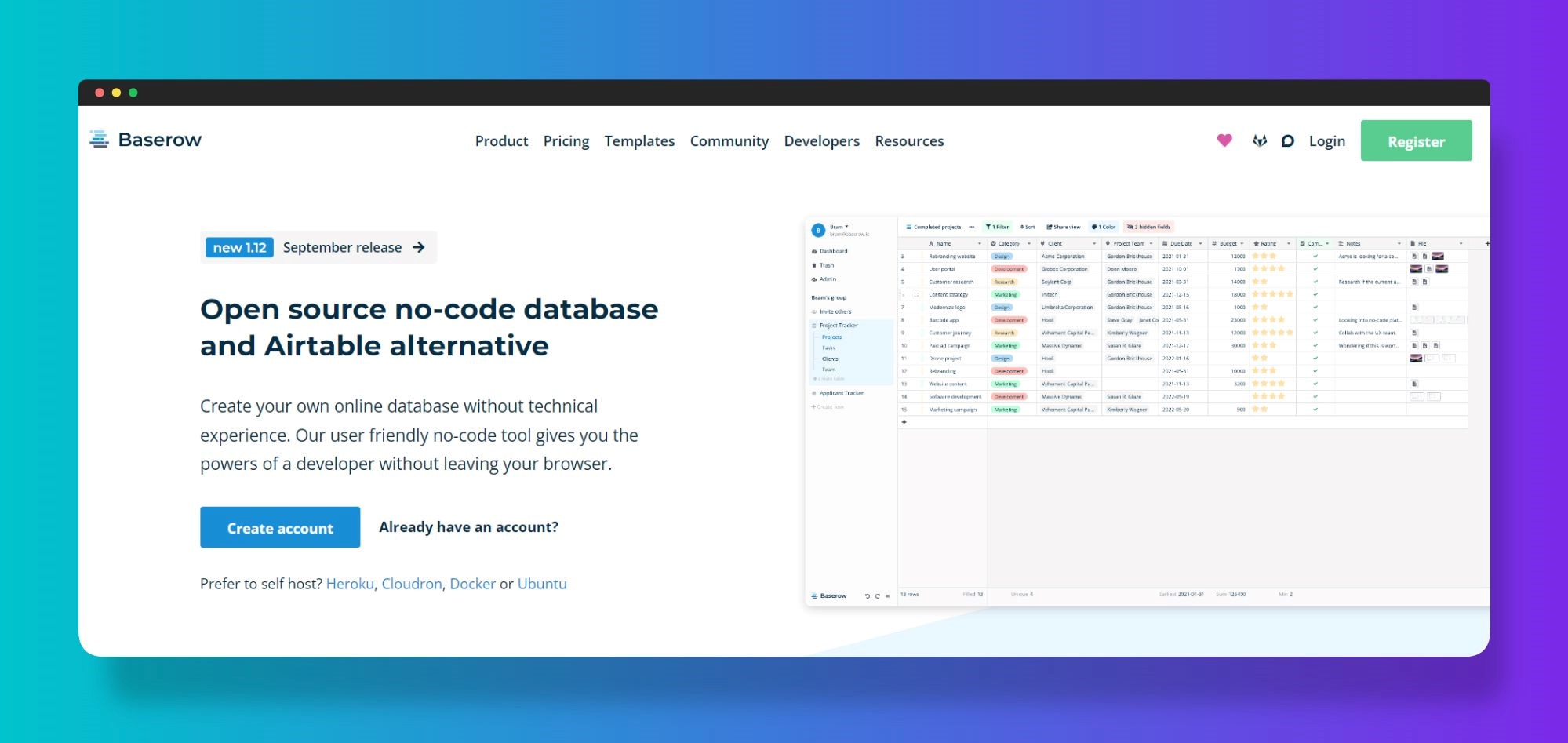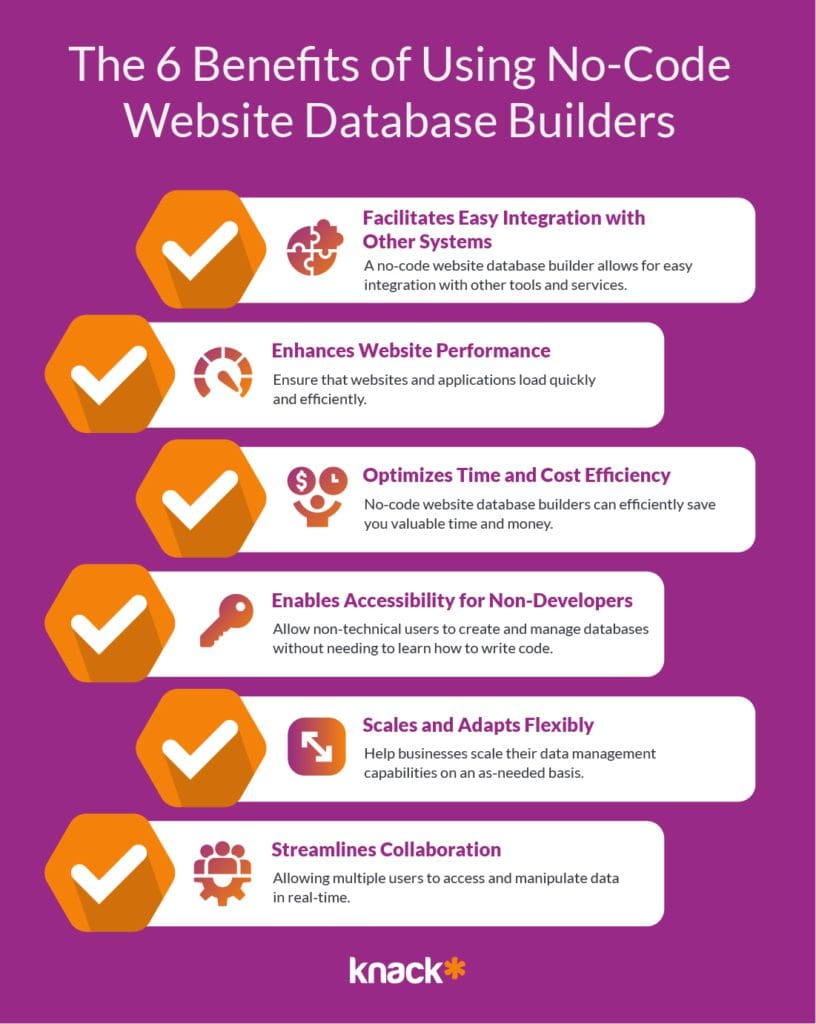No-Code Open System Data Source Development: Streamline Complicated Development Jobs
No-Code Open System Data Source Development: Streamline Complicated Development Jobs
Blog Article
Discovering the Benefits of Scalable Data Sources That Require No Coding Skills for Effective Information Monitoring Solutions
The emergence of scalable databases that get rid of the requirement for coding skills offers a transformative chance for organizations looking for effective data administration solutions. As we think about the implications of such advancements, it comes to be crucial to take a look at how they can improve the landscape of information monitoring and drive lasting development in an affordable atmosphere.
Boosted Accessibility for Customers
Boosted ease of access for customers is an essential facet of scalable data sources, ensuring that information administration systems are straightforward and intuitive. In an era where data-driven decisions are paramount, accessibility enables a larger series of individuals, consisting of those without considerable technical expertise, to engage with database systems efficiently. This democratization of information access assists in boosted partnership across departments, encouraging workers to make and draw out insights informed decisions.
Straightforward user interfaces, such as drag-and-drop features and aesthetic data depiction, simplify intricate data interactions. These improvements minimize the learning curve related to traditional database monitoring, allowing individuals to focus on leveraging information instead than grappling with technological complexities. Scalable data sources typically integrate personalized dashboards and real-time analytics, supplying individuals with instant understandings tailored to their specific requirements.
Cost-Effectiveness and Source Savings
Effective information administration not just hinges on availability but likewise on cost-effectiveness and source financial savings. Scalable data sources designed for users without any coding abilities dramatically decrease economic burdens typically associated with traditional database monitoring systems. By eliminating the demand for specialized programming competence, companies can assign their sources much more efficiently, concentrating funds on core company activities as opposed to extensive training or working with knowledgeable employees.
Additionally, these data sources usually make use of cloud-based options, which better lower costs connected to hardware and maintenance. Organizations can scale their data source services according to their requirements, preventing the costs incurred from over-provisioning resources. This adaptability suggests businesses can adapt to changing demands without incurring unneeded expenses, resulting in substantial long-lasting savings.
Additionally, user-friendly user interfaces streamline information entrance and management procedures, reducing the time spent on administrative tasks. This performance translates into labor expense savings, permitting teams to concentrate on critical efforts instead than routine upkeep. Generally, taking on scalable data sources that need no coding skills cultivates a more cost-effective approach to information monitoring, enabling companies to maximize their resources while keeping high degrees of operational efficiency.
Improved Collaboration Across Teams

In addition, scalable data sources promote smooth interaction among group members. With straightforward interfaces that require no coding abilities, workers can quickly create, change, and share records or dashboards tailored to their details demands. This democratization of information encourages non-technical customers to contribute insights, boosting the joint atmosphere.
Furthermore, these databases sustain concurrent gain access to, enabling multiple users to work on the exact same dataset all at once. This feature boosts productivity, as groups can take part in joint information analysis without the danger of variation control concerns. The capability to leave notes or remarks directly within the data source even more promotes dialogue and clears up information analyses.
Streamlined Data Management Processes
In today's data-driven environment, organizations identify the requirement of structured information management refines to optimize efficiency and accuracy. By leveraging scalable data sources that call for no coding abilities, businesses can streamline their data handling and decrease the complexities generally related to traditional data source systems. This accessibility encourages non-technical customers to engage straight with information, promoting quicker decision-making and lowering dependence on specialized IT employees.
Structured information monitoring processes improve operations by automating regular jobs such as data entrance, recognition, and coverage. Automated data combination guarantees that information from different sources is aggregated seamlessly, removing silos and promoting a linked view of critical organization metrics (no-code). Moreover, user-friendly interfaces permit workers to adjust data quickly, enabling them to create insights that drive strategic efforts without the need for comprehensive training.
This efficiency not just accelerates operational processes however additionally lessens the capacity for human error, making certain that information stays trusted and exact. Inevitably, streamlined information management processes through scalable databases lead to boosted efficiency, permitting organizations to concentrate on core tasks while ensuring that their data monitoring techniques are effective and effective.
Scalability for Growing Organizations

For broadening business, read the full info here the capacity to scale up or down is crucial. A scalable database can handle an influx of data created from brand-new clients, products, or solutions, making sure that company operations remain undisturbed. These data sources offer the capacity his explanation to manage peak lots effectively, which is necessary during durations of quick development or seasonal spikes.
Additionally, several scalable database solutions are created with user-friendly interfaces that require no coding skills, equipping non-technical staff to manage information efficiently (no-code). This democratization of information monitoring permits companies to allot sources purposefully and minimize reliance on specialized IT workers
Eventually, taking on a scalable database not just improves operational performance yet additionally fosters a setting where services can innovate and advance without the restraints of traditional data source systems. This versatility positions organizations for long-lasting success in today's affordable landscape.
Verdict
In final thought, scalable databases that need no coding skills supply substantial benefits for efficient information management. These systems boost accessibility for non-technical customers, lower functional prices, and promote collaboration across groups. By improving data monitoring procedures and supplying scalability for growing organizations, such solutions enable companies to adapt to changing needs effectively. Ultimately, the adoption of these user-friendly databases cultivates development and placements services for long-term success in a dynamic setting.
Boosted accessibility for users is an important element of scalable data sources, making sure that information management systems are user-friendly and intuitive.Straightforward user interfaces, such as drag-and-drop attributes and visual information depiction, simplify intricate data communications. Overall, taking on scalable data sources that need no coding abilities cultivates a much more cost-efficient technique to information management, allowing companies to optimize their resources while keeping high levels of functional performance.
By leveraging scalable databases that need no coding more tips here skills, companies can simplify their information handling and minimize the intricacies usually linked with conventional data source systems - no-code.Structured data administration processes improve operations by automating regular jobs such as information entry, validation, and coverage
Report this page